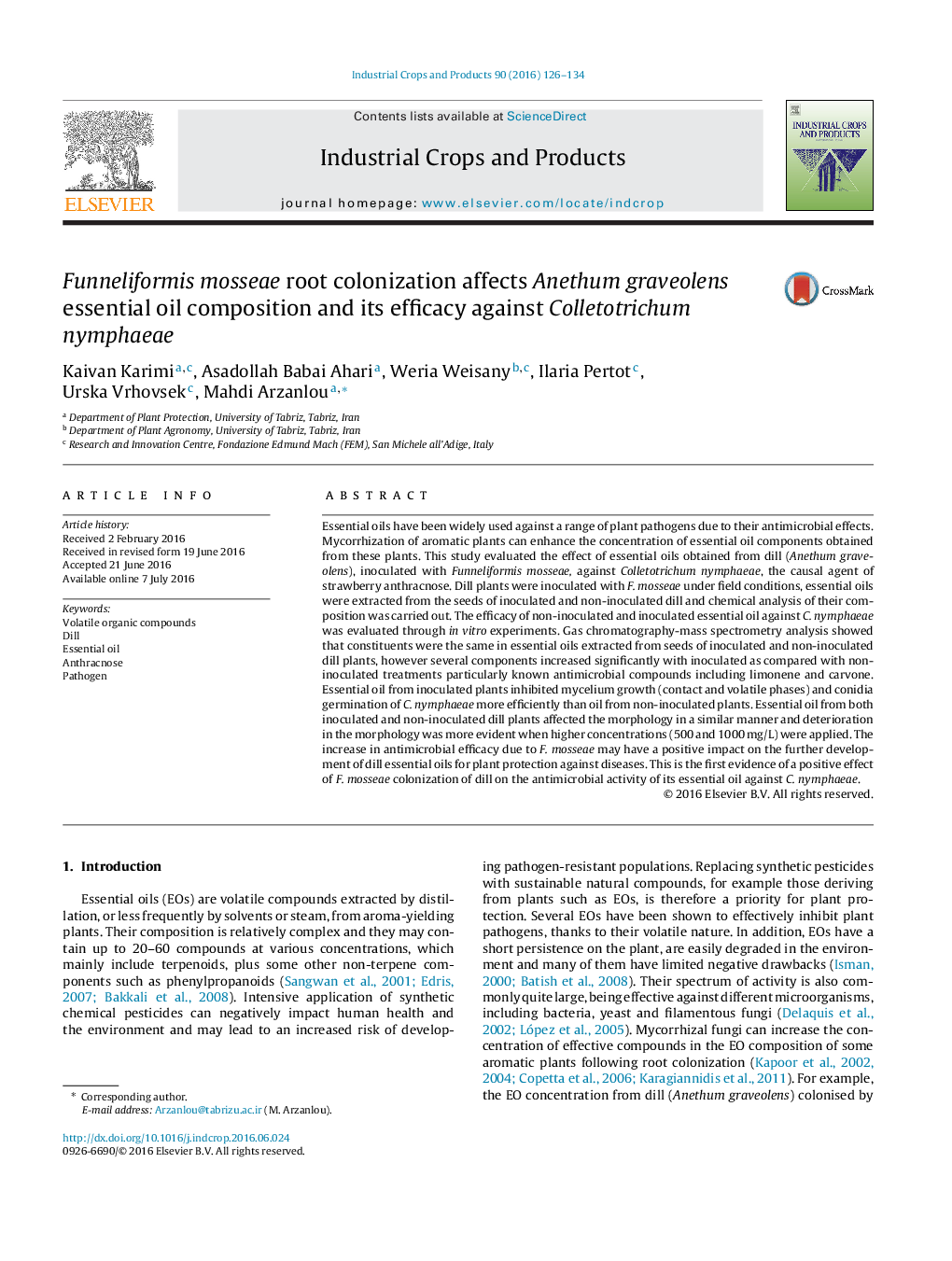| کد مقاله | کد نشریه | سال انتشار | مقاله انگلیسی | نسخه تمام متن |
|---|---|---|---|---|
| 4512101 | 1624820 | 2016 | 9 صفحه PDF | دانلود رایگان |

• Dill essential oil has antimicrobial effect against Colletotrichum nymphaeae.
• Essential oil from mycorriazed plants had higher antimicrobial effect at certain dosages.
• Mycorrhized and non-mycorrhized essential oils produced similar changes on fungal morphology.
Essential oils have been widely used against a range of plant pathogens due to their antimicrobial effects. Mycorrhization of aromatic plants can enhance the concentration of essential oil components obtained from these plants. This study evaluated the effect of essential oils obtained from dill (Anethum graveolens), inoculated with Funneliformis mosseae, against Colletotrichum nymphaeae, the causal agent of strawberry anthracnose. Dill plants were inoculated with F. mosseae under field conditions, essential oils were extracted from the seeds of inoculated and non-inoculated dill and chemical analysis of their composition was carried out. The efficacy of non-inoculated and inoculated essential oil against C. nymphaeae was evaluated through in vitro experiments. Gas chromatography-mass spectrometry analysis showed that constituents were the same in essential oils extracted from seeds of inoculated and non-inoculated dill plants, however several components increased significantly with inoculated as compared with non-inoculated treatments particularly known antimicrobial compounds including limonene and carvone. Essential oil from inoculated plants inhibited mycelium growth (contact and volatile phases) and conidia germination of C. nymphaeae more efficiently than oil from non-inoculated plants. Essential oil from both inoculated and non-inoculated dill plants affected the morphology in a similar manner and deterioration in the morphology was more evident when higher concentrations (500 and 1000 mg/L) were applied. The increase in antimicrobial efficacy due to F. mosseae may have a positive impact on the further development of dill essential oils for plant protection against diseases. This is the first evidence of a positive effect of F. mosseae colonization of dill on the antimicrobial activity of its essential oil against C. nymphaeae.
Figure optionsDownload as PowerPoint slide
Journal: Industrial Crops and Products - Volume 90, 15 November 2016, Pages 126–134